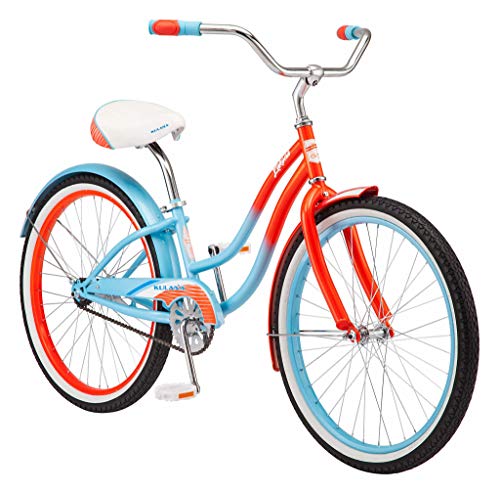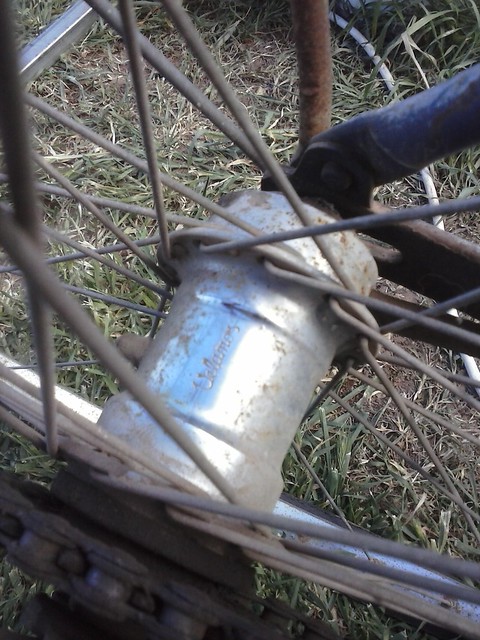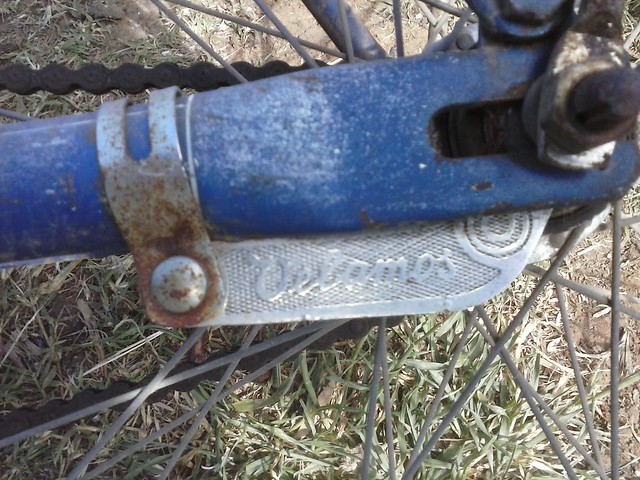Cross-posted from a forum on an entirely different site; I hope that's not a foul. I just wanted the RRB set to weigh in as well...
OK. So, I got this Velosteel hub, and there's a whole lot to like about it. It looks cool, it coasts silently and with very little drag compared to any other SS cb hubs I've used, and the innards of the thing seem to be of high-quality.
Drawbacks: the brake is weaker than a Shimano cb-e110 and, b/c it's based on the ol' Fichtel & Sachs Torpedo (which seems like a good thing, and in many ways, it is), it's really meant to be lubed with oil, as opposed to grease. However, since oil ports have been considered unseemly on bike hubs since the early 80s, the Czechs make their hubs without oil ports. B/c of this, most folks will repack them with grease, but grease on the roller bearings at the driver tends to be too sticky, and it causes things to stick, and the sprocket can turn almost 360degrees before engaging on a gummy Velosteel.
My solution has been to use grease on the ball bearing retainers and in the races for the balls, but I hit the rollers of the driver and the brake clutch with oil. BITD, I would very lightly grease the brake shoes, but lately I've been oiling those, too. This makes for a nicely-performing hub, but it needs more repacking than I'd like--probably about quarterly. (For comparison, my cb-e110-equipped bike gets a massive dose of grease in a repack, and never shows symptoms of "needing" a repack; I just repack it when I get bored.)
On to the question: I've seen IGH nerds online who have drilled and tapped their Nexus or modern S-A hubs for an oil-bath conversion. They tap it up, douse it with 10ml or so of oil (or however much fits without bleeding out), plug the hole, and go. I'm super-jealous of those guys. They have special oils recommended by Shimano and S-A for these hubs-- my first question is:
#1- what oil would be best for a primitive thing like the Velosteel? A perverted corner of my soul really wants to use synthetic motor oil, but there's probably no good reason for that impulse, unless it'd work well and cost less. But I'm interested to hear suggestions from this board.
It's also crossed my mind that the Nexus hubs seem to have superior seals, compared to the Velosteel. OTOH, old S-A AWC hubs, modern S-A 3speeds (which have been converted), and my old F&S Torpedo Duomatic (with factory-original oil port) don't seem to be better sealed. Still, my second question is:
#2- do ya think that the oil will just blow out of both sides of the hubs, at the cones and/or ball retainers? FWIW, the bike will be ridden on paved roads, and sustained braking/high temperatures are unlikely.
Pertinent info:
-Tapping the hub will be easy, mostly b/c I don't intend to convert the hub I've been riding these past few years. I have a new hub, as of yet unlaced, that I'd try this on.
-Here's detailed pics of the innards of a Velosteel, for those who are mechanically experienced but unfamiliar with the hub. It's markedly different from the ubiquitous Shimanos, the Bendix hubs that Shimano knocked off, and the KT hubs which attempted to knock off Shimano's knockoff.
- The intended bike will be this cycletruck that I've been riding, tearing down, and (eventually) rebuilding. CB rear, drum front.
-This is not a purely theoretical post; this is something I really want to do. I'm not, however, convinced that it will achieve the results I'm looking for. I'm OK with that. Nothing ventured, nothing gained, etc... It'd be cheap to do, not accounting for time, and I'm convinced that, even if it DOESN'T work, I'll be able to just treat it as I do my current Velosteel. I just think it could potentially save me some hassle, plus I'd secretly feel like an uber-pimp if I periodically used a syringe to inject motor oil into an oddball hub via a port that I made myself. I'm just a creepy guy, I guess.
-I have already considered the fact that the thing might leak schmultzy oil all over the floor when parked, and intend to devise some sort of drop-cloth/cyclo-diaper for initial testing, in order to avoid divorce proceedings.
If you're still reading at this point, I'd truly appreciate your feedback. TIA.
-Rob
OK. So, I got this Velosteel hub, and there's a whole lot to like about it. It looks cool, it coasts silently and with very little drag compared to any other SS cb hubs I've used, and the innards of the thing seem to be of high-quality.
Drawbacks: the brake is weaker than a Shimano cb-e110 and, b/c it's based on the ol' Fichtel & Sachs Torpedo (which seems like a good thing, and in many ways, it is), it's really meant to be lubed with oil, as opposed to grease. However, since oil ports have been considered unseemly on bike hubs since the early 80s, the Czechs make their hubs without oil ports. B/c of this, most folks will repack them with grease, but grease on the roller bearings at the driver tends to be too sticky, and it causes things to stick, and the sprocket can turn almost 360degrees before engaging on a gummy Velosteel.
My solution has been to use grease on the ball bearing retainers and in the races for the balls, but I hit the rollers of the driver and the brake clutch with oil. BITD, I would very lightly grease the brake shoes, but lately I've been oiling those, too. This makes for a nicely-performing hub, but it needs more repacking than I'd like--probably about quarterly. (For comparison, my cb-e110-equipped bike gets a massive dose of grease in a repack, and never shows symptoms of "needing" a repack; I just repack it when I get bored.)
On to the question: I've seen IGH nerds online who have drilled and tapped their Nexus or modern S-A hubs for an oil-bath conversion. They tap it up, douse it with 10ml or so of oil (or however much fits without bleeding out), plug the hole, and go. I'm super-jealous of those guys. They have special oils recommended by Shimano and S-A for these hubs-- my first question is:
#1- what oil would be best for a primitive thing like the Velosteel? A perverted corner of my soul really wants to use synthetic motor oil, but there's probably no good reason for that impulse, unless it'd work well and cost less. But I'm interested to hear suggestions from this board.
It's also crossed my mind that the Nexus hubs seem to have superior seals, compared to the Velosteel. OTOH, old S-A AWC hubs, modern S-A 3speeds (which have been converted), and my old F&S Torpedo Duomatic (with factory-original oil port) don't seem to be better sealed. Still, my second question is:
#2- do ya think that the oil will just blow out of both sides of the hubs, at the cones and/or ball retainers? FWIW, the bike will be ridden on paved roads, and sustained braking/high temperatures are unlikely.
Pertinent info:
-Tapping the hub will be easy, mostly b/c I don't intend to convert the hub I've been riding these past few years. I have a new hub, as of yet unlaced, that I'd try this on.
-Here's detailed pics of the innards of a Velosteel, for those who are mechanically experienced but unfamiliar with the hub. It's markedly different from the ubiquitous Shimanos, the Bendix hubs that Shimano knocked off, and the KT hubs which attempted to knock off Shimano's knockoff.
- The intended bike will be this cycletruck that I've been riding, tearing down, and (eventually) rebuilding. CB rear, drum front.
-This is not a purely theoretical post; this is something I really want to do. I'm not, however, convinced that it will achieve the results I'm looking for. I'm OK with that. Nothing ventured, nothing gained, etc... It'd be cheap to do, not accounting for time, and I'm convinced that, even if it DOESN'T work, I'll be able to just treat it as I do my current Velosteel. I just think it could potentially save me some hassle, plus I'd secretly feel like an uber-pimp if I periodically used a syringe to inject motor oil into an oddball hub via a port that I made myself. I'm just a creepy guy, I guess.
-I have already considered the fact that the thing might leak schmultzy oil all over the floor when parked, and intend to devise some sort of drop-cloth/cyclo-diaper for initial testing, in order to avoid divorce proceedings.
If you're still reading at this point, I'd truly appreciate your feedback. TIA.
-Rob

































































